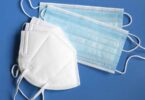Broadly speaking, it is a dislocation that, without losing the congruence of the articular faces, does present a minimal displacement of the articular union for a short time, immediately returning to its original position.
It would be a traumatic joint sprain, which is painful and produces inflammation in the affected area (ankle, knee, fingers…). The ankle sprain is the most frequent.
The distension, rupture and even tearing is when the ligaments and structures of fixation of the joint suffer an overexertion. For its part, the vascular system and connective tissue will also be affected, to a greater or lesser degree, resulting in possible internal effusions and edema, respectively. Therefore, the severity and consequences of the sprain will depend on the energy of the trauma and the strength or consistency of said joint.
The application of ice allows us to reduce the inflammation and the sensation of pain caused by the sprain.
The priority of rehabilitation in this type of injury lies in controlling inflammation and pain, as well as relieving loads in the area affected by the sprain. We will follow the protocol for this: Rest, Ice, Compression and Elevation. Therefore, the first measures for the treatment of a sprain will be:
- Apply ice or some cold mechanism (a bag of frozen peas is applied at home due to its adaptability to any joint), thus reducing inflammation and calming pain.
- Make a compression bandage of the damaged area.
- Elevation of the injured limb to promote edematous drainage. It is important that, in the case of the ankle, its elevation is above the hip, so that this drainage is effective.
- To treat the sprain, the administration of anti-inflammatory and analgesic medications will also be beneficial. Likewise, the use of any type of prosthesis is recommended in order to dissipate any load on that damaged joint. Depending on the grading of the injury, response measures can be cited in the event of a sprain injury:
Grade 1 sprain
- No immobilization is necessary, and it is even prudent to allow its use. From the second day, you can start with mobilization exercises (flexo-extensions, joint mobility, strengthening, etc.). Once recovered, and before resuming physical activity, it is advisable to fix the joint with a preventive bandage.
Grade 2 sprain
- The pattern of action will be identical to grade 1, with the exception of protection with a splint or functional bandage from the second day.
Grade 3 sprain
- Before any action, the injury must be evaluated by a specialist, in this case a trauma specialist, to discern the extent of the injury and the pertinent tests to be carried out. Subsequently, and as in the previous cases, we will start the first two days with the protocol: Rest, Ice, Compression and Elevation; Once the inflammation has subsided (two to three weeks), the rehabilitation work will begin by professional therapists accompanied by the use of discharge splints or functional bandages.
- The exercise will consist of activities that seek the amplitude of the movements and the strengthening of ligaments. Tracing the letters of the alphabet in the air with your thumb or standing on your toes are examples of these rehabilitative exercises.
It is a very frequent type of injury, especially in young people due to sports practice due to a bad step, bad movement or the use of inappropriate footwear; but it is also observed at other times of life where less agility or weakness of the joints can cause risk of suffering from it. It causes a good number of medical consultations and, although they are not a serious disorder, they usually generate socio-health costs due to the absenteeism they cause.








